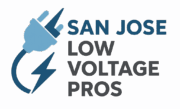Is 30V Considered Low Voltage?
Introduction
If you’ve ever worked with batteries, electronics, or industrial equipment, you’ve likely encountered the question: “Is 30V considered low voltage?” While the number may sound small compared to household mains electricity (120V or 240V), the official answer lies in how international standards define voltage ranges.
This article provides a comprehensive breakdown of 30V, including where it fits in global standards, its applications, safety considerations, and common misconceptions. Whether you’re an electrician, engineer, student, or DIY enthusiast, understanding this classification helps you work more safely and effectively.
For expert low voltage solutions, visit San Jose Low Voltage Pros today.
Table of Contents
- Official Definition of Low Voltage
- Where Does 30V Fit in Standards?
- Low Voltage vs. Extra-Low Voltage
- Practical Applications of 30V Systems
- Safety Risks of 30V
- Common Misconceptions
- Future of Low Voltage Technology
- Conclusion
- FAQs
Official Definition of Low Voltage
To answer whether 30V is considered low voltage, we must look at internationally recognized standards:
- IEC (International Electrotechnical Commission – IEC 60038):
- Extra-Low Voltage (ELV): <50V AC or <120V DC
- Low Voltage (LV): 50–1,000V AC / 120–1,500V DC
- OSHA (Occupational Safety and Health Administration, U.S.): Recognizes 50V as the threshold where shock hazards become more significant.
- EU Low Voltage Directive (2014/35/EU): Covers devices operating at 50–1,000V AC and 75–1,500V DC.
👉 Based on these definitions: 30V falls into the “extra-low voltage” (ELV) category, which is technically within the broader classification of low voltage systems but carries a lower risk profile.
Where Does 30V Fit in Standards?
| Standard | Extra-Low Voltage (ELV) | Low Voltage (LV) | 30V Classification |
|---|---|---|---|
| IEC 60038 | <50V AC / <120V DC | 50–1,000V AC / 120–1,500V DC | ELV |
| OSHA (USA) | Below 50V = reduced hazard | 50V+ = significant hazard | ELV |
| EU LVD | Not covered (<50V excluded) | 50–1,000V AC / 75–1,500V DC | ELV (outside scope) |
Thus, 30V is extra-low voltage by global standards.
Low Voltage vs. Extra-Low Voltage
It’s important to distinguish between low voltage (LV) and extra-low voltage (ELV):
- Low Voltage (LV): 50–1,000V AC (used in household power systems).
- Extra-Low Voltage (ELV): Under 50V AC or 120V DC (used for electronics, control systems, and safety-critical applications).
⚡ 30V fits firmly in the ELV category.
Practical Applications of 30V Systems
30V is commonly used in applications where safety and efficiency are important:
- Consumer Electronics: Laptops, routers, LED lighting systems.
- Telecommunications: Data cabling and power-over-Ethernet (PoE) systems.
- Industrial Control Systems: PLCs, sensors, automation controllers.
- Solar and Battery Systems: Some photovoltaic panels and DC storage circuits.
- Automotive Systems: Certain EV battery components and low-voltage accessories.
🔎 Many PoE (Power over Ethernet) standards deliver around 30V DC, highlighting how widespread this voltage level is in modern systems.
Safety Risks of 30V
Even though 30V is considered safer, it doesn’t mean it’s risk-free.
Potential hazards include:
- Electric shock: While less likely to penetrate dry human skin, it can still be harmful under wet or damaged skin conditions.
- Fire hazards: Poor wiring or overcurrent at 30V can still cause overheating and fires.
- Short circuits: Can damage equipment or create sparks.
Precautions:
- Follow NEC and OSHA guidelines when working with circuits.
- Use proper fuses and circuit breakers.
- Avoid direct contact with live conductors, even at ELV levels.
Common Misconceptions
- “30V is completely safe.” → Not true. Lower risk doesn’t mean zero risk.
- “Low voltage starts at 1V.” → Incorrect. Standards define LV starting at 50V AC.
- “30V can’t cause fire.” → False. If enough current is available, even 30V circuits can ignite flammable materials.
Common systems often operate at 12V or 24V, which are also classified as low voltage. Learn more in our guide on 12V and 24V low voltage systems.
Future of Low Voltage Technology
The role of 30V and other ELV systems is growing, especially in:
- Smart homes and IoT: PoE-based devices.
- Renewable energy: Microgrids and DC distribution systems.
- EV infrastructure: Auxiliary systems and control electronics.
- Energy efficiency: More appliances shifting to DC ELV ranges.
Expect wider adoption of ELV-powered building infrastructure, reducing reliance on high-voltage wiring.
Conclusion
So, is 30V considered low voltage?
Yes — by global definitions, 30V is classified as “extra-low voltage” (ELV), which is a subset of low voltage. While it carries fewer risks than household mains power, it still requires caution, proper installation, and adherence to safety standards.
Understanding where 30V fits helps you design safer systems, comply with regulations, and avoid common misconceptions.
